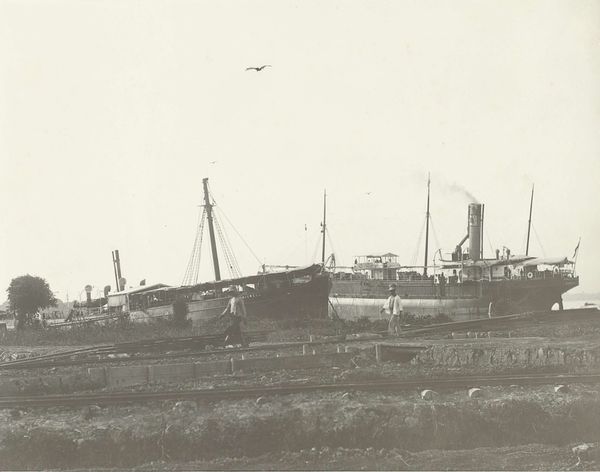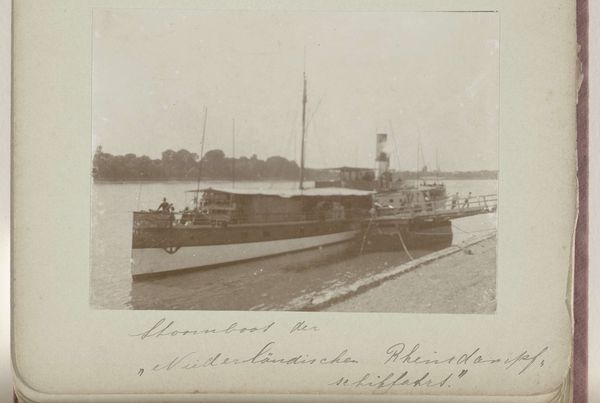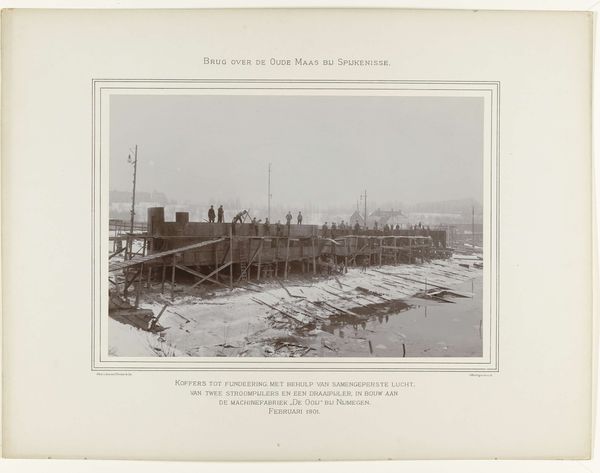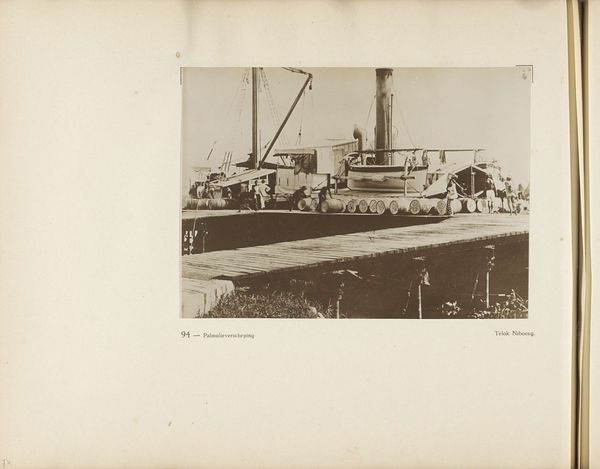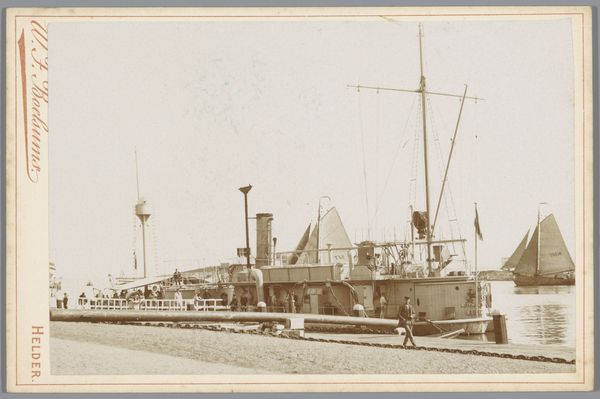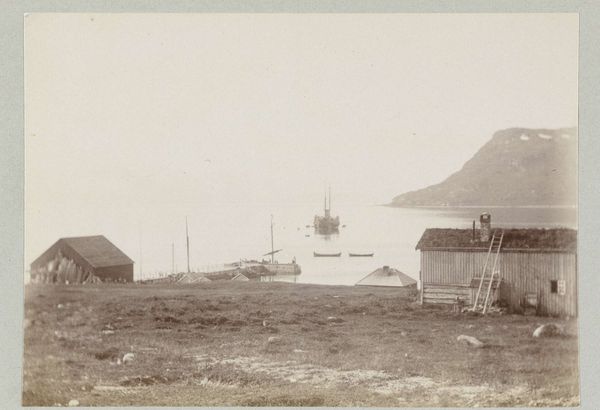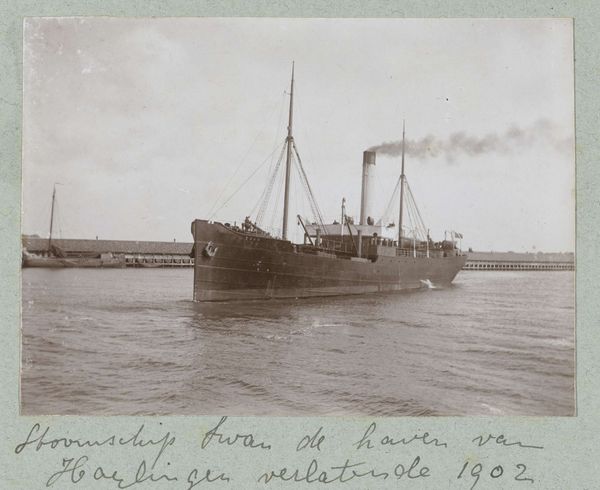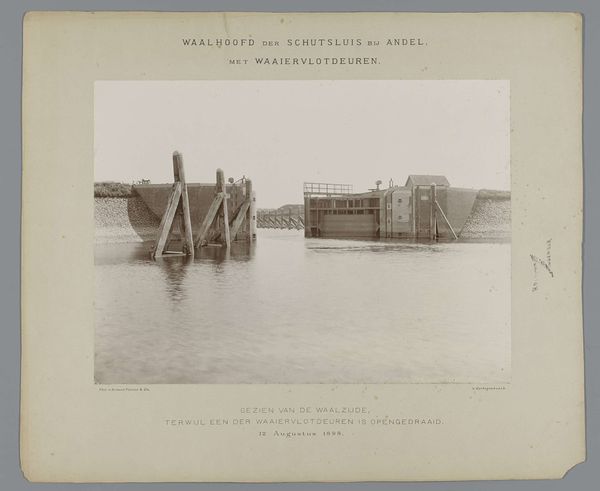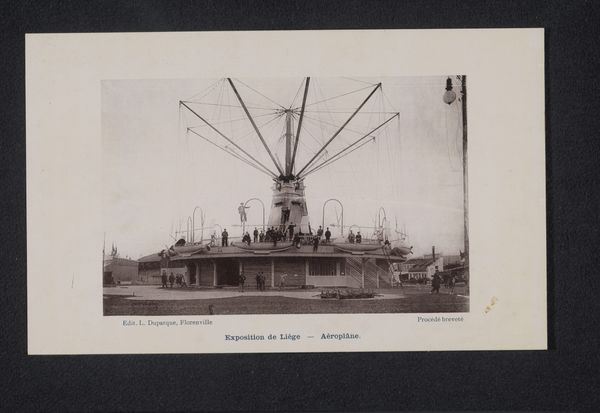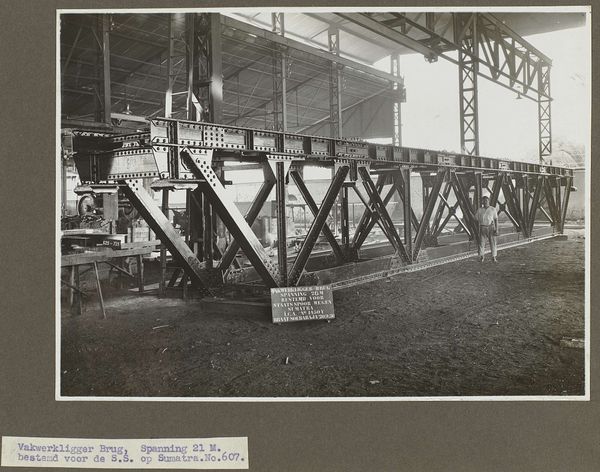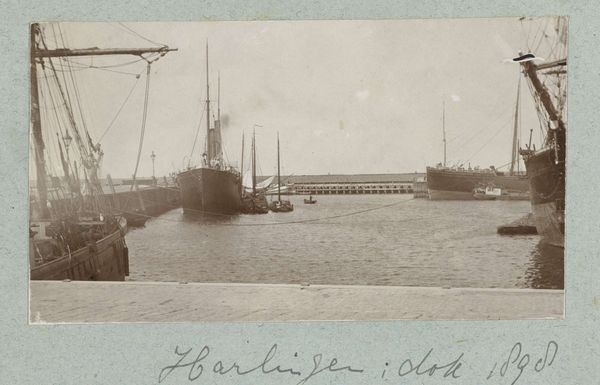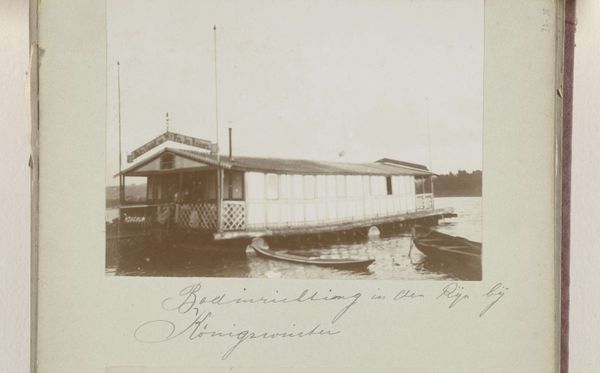
Dimensions: height 77 mm, width 109 mm, height 242 mm, width 333 mm
Copyright: Rijks Museum: Open Domain
Editor: This is "Treinwagon in haven," a gelatin silver print by Frits Freerks Fontein Fz., dating back to 1899. It's quite striking, almost a scene from industrial life. What do you see in this piece? Curator: I see a convergence of industry and infrastructure, captured through the lens of material conditions. Fontein's choice of photography as a medium allows us to examine the real-world elements: the train wagons, the ship masts, and the raw materiality of the harbor. It highlights the processes of production and exchange inherent to this scene. Editor: So, less about aesthetics and more about what's physically there? Curator: Precisely. Look at the surface texture of the photograph itself, the grainy quality. It reminds us of the labor involved, the chemical processes, and the tangible effort to document this moment. The starkness challenges the traditional boundaries of landscape art; instead, we confront the impact of industrialization on the landscape. The harbor, no longer just a picturesque scene but a hub of activity, each train wagon speaking of resources, labor and consumption. How are they related? Editor: Interesting. So, even the choice of a gelatin silver print emphasizes the material process, aligning the art with the industrial subject matter. Do you think the landscape tradition and style matter here? Curator: Absolutely. By adopting photography over other means, the artist almost forces us to confront the 'real.' The choice of materials itself places the artist's intervention directly in dialogue with capitalism, mass media, and the dissemination of material goods. We can also talk about consumption of images too! The work demands scrutiny of the entire process – extraction, manufacturing, transportation, exchange - all on view in the harbour scene. Editor: I see now! So the image isn’t just showing a scene but commenting on a whole system. Thanks, that really changed how I see it. Curator: Indeed. This helps us see that by focusing on materials and production we get a clearer view of art and its relationship to the world.
Comments
No comments
Be the first to comment and join the conversation on the ultimate creative platform.
